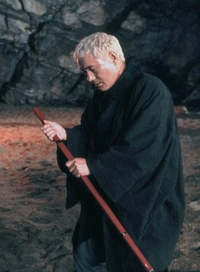| Shirasaya vs. Shikomi-Zue: | ||||
|
There is often some confusion amongst newcomers between the shirasaya and the shikomi-zue. Therefore, by way of clarification, we offer the following. Shikomi-zue was a way of mounting the blade so as to hide it in what looks like a walking stick, cane, or other similar yet innocuous item. The reasons were diverse, of course, but in the Meiji era this became popular because of the ban on Samurai wearing swords openly as well as the decree which closely followed, that ordered all katana be surrendered to the Imperial Authorities. Even during the Meiji era, the shikomi-zue was not as prevalent or as widespread as is sometimes believed. The image of swarms of clandestine Samurai and/or Ninja skulking about town ready to unleash their stealthy swords at a second's provocation is largely the fanciful notion of movie makers. Certainly, there was a clandestine motive behind the shikomi-zue (hiding illegal weapons from the authorities) and yes, there were those who saw it as an advantageous assassin's ploy, but for the most part, the use of shikomi-zue as an assassin's sword is a very handy plot device. |
|
|||
